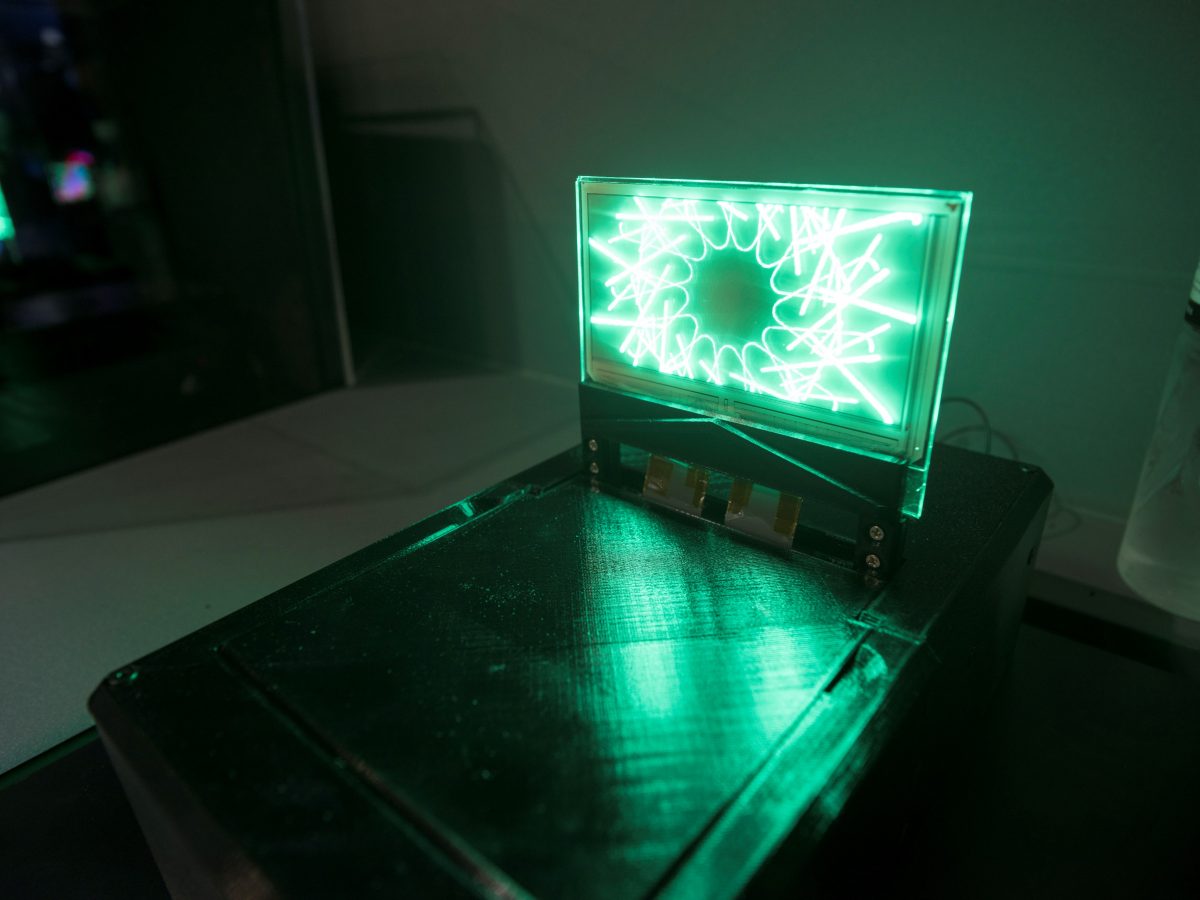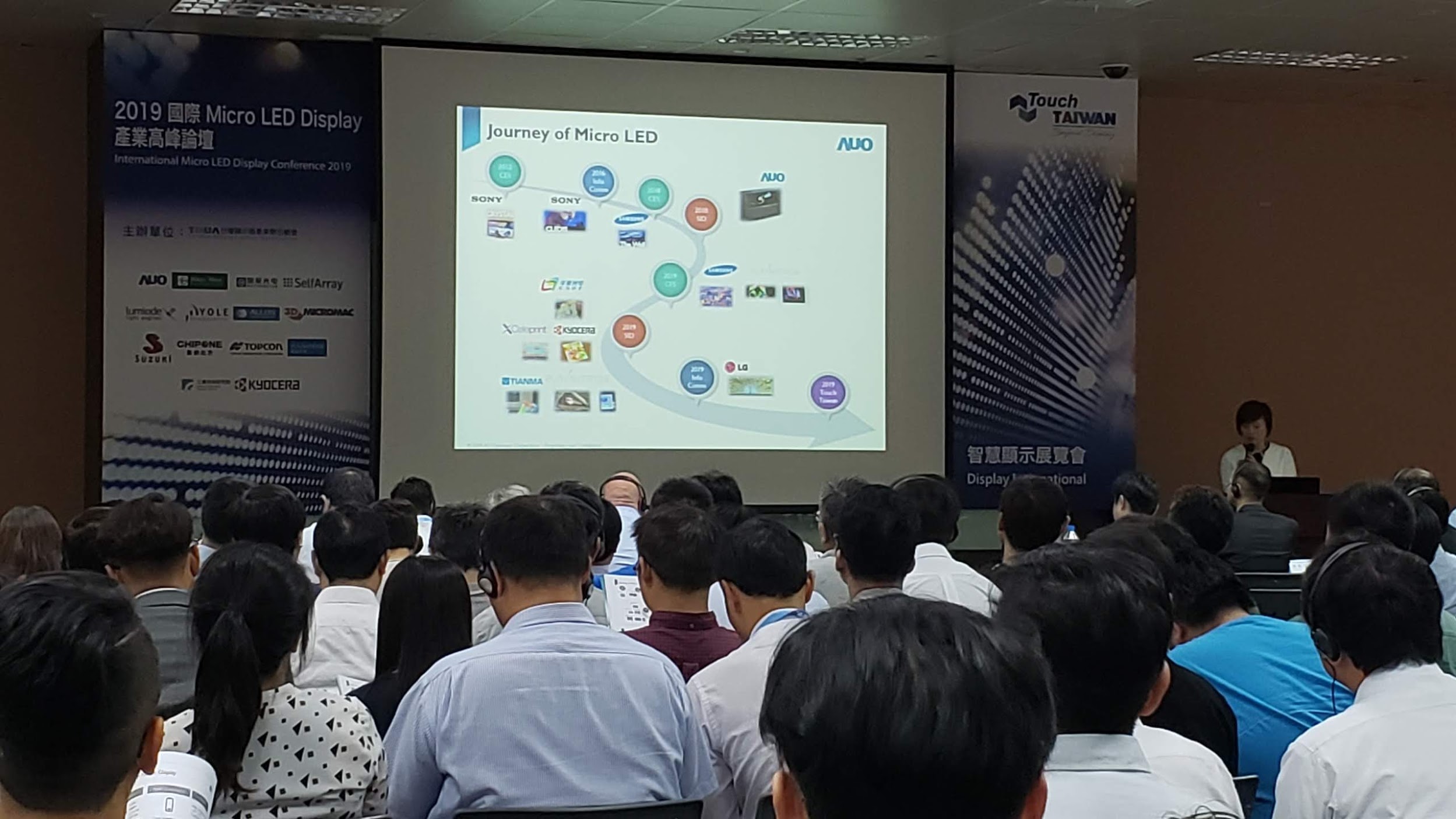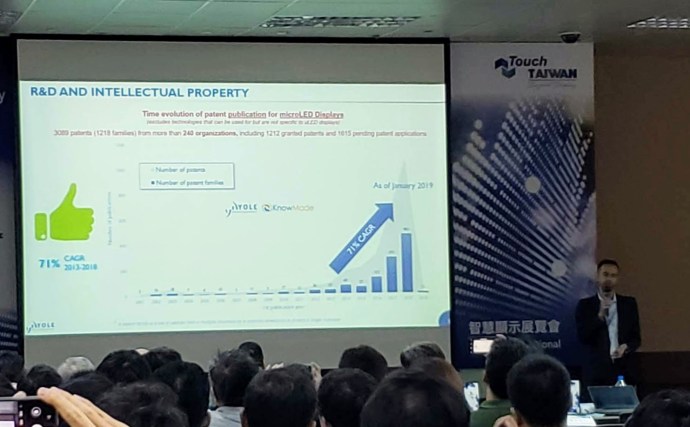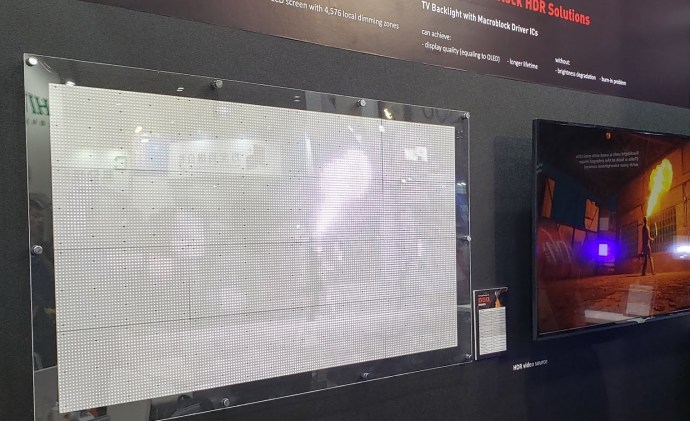
Touch Taiwan Day 2 Impressions – More On The Challenge Of Micro LED
August 30, 2019 by Dave Haynes
One of the reasons I accepted the invitation to come to Taipei for Touch Taiwan – the other one being soup dumplings – was a chance to invest some time talking to manufacturers and getting an update on where LED display technology is at.
While China is without a doubt the epicenter of direct view LED, the little island of Taiwan off the Chinese coast has some major players, and doing some serious work in the area of mini and micro LED.

I’ve been asking at this trade show about both, and getting a variety of opinions about what each is, particularly as it relates to size. Generally, I think, microLED is an LED light unit that is less than 100 micrometers, while mini LED is 100 to 200 (I have also seen 100 to 300) micrometers.
So, really, really small. You need a microscope to see naked microLED die.
Then there are the conventional surface mounted devices (SMDs) that you now see on most direct view fine pitch LED displays out there now. Those go from 0.6mm and then up and up.
To boil it down to really simple terms:
- SMD is where it is at now, in terms of fine pixel pitch indoor LED displays, but the 0.6mm pitch is about as tight as they will get because of their design, and manufacturing processes;
- MiniLED is a likely an interim next step technology that does things differently, but looks like SMD-based but smaller. Its main use may be more as backlights than as direct view LED;
- That’s because microLED will offer OLED/QLED level resolution and color, and mind-blowing brightness, on direct view surfaces.
I went to a series of sessions at the Taiwan trade show on Thursday, and also did some booth interviews with companies working on the issue. I also went down to Hsinchu, south of Taipei, to visit AUO and go for dinner (yes, we had xiao long bao – soup dumplings). AUO is the Taiwan display manufacturing giant that acquired ComQi.
As you might expect, because the technology is just emerging, there are widely varied opinions about where things are going and the timelines and applications for micro LED.

Eric Virey, the LED-focused market analyst for the French firm Yole, told the crowd there is a lot of patent work going on, and in the past year or so, what Canadians would call a “hockey stick” surge in patent applications, from more than 200 companies.
He says there are possibilities for microLED for everything from VR headsets to big digital signage displays. But also says there are big challenges ahead, because of the scale of video walls.
First, the micro LED die probably need to get smaller, even though you need a microscope to see them now. The processes for manufacturing need to get better. And manufacturing yields have to hit 99.999% or better – since even a teeny percentage (like one less .9) can mean 100s or 1,000s of dead pixels on a large display consisting of millions of little lights.
Virey used the example of current technologies being applied to make the equivalent resolution of an 8K TV display – suggesting it would take the machines that transfer die to a substrate 13 years to apply all those little specks. Even with a yield of 99.99%, about 500,000 of the LED lights would be defective and need repair or replacement.
One way around that would be to double up on the die, so there is redundancy. But that doubles die costs and necessitates them getting very small.
Virey suggested it will probably be two to three years before the market sees viable microLED displays.
However, there are microLED displays already out there – notably the crazy expensive but gorgeous Sony Crystal LED. Samsung has The Wall, which is calls micro LED but technical people not working for Samsung say is actually miniLED.
I am not technical enough to get too deep in the weeds on this stuff, but I did see some things on the floor that intrigued me.
Taiwan’s Lextar took me around the booth and introduced a US start-up called X-Display that is working on microLED. They were showing a small prototype (main image on this post) that did not need a conventional backplane or plate and sat on glass. It could push 30,000 nits of brightness.
That’s intriguing on a whole bunch of levels. The Raleigh, NC company – working with Lextar – says it has individual microscopic level integrated circuits for each LED light, which would remove the need for fabrication plant tech that can cost billions. It also means you could have active, super-high resolution window glass capable of doubling up as displays, with very high transparency.
It is a long way from a little one-color prototype to that, but Virey thinks separately the integrated circuit thing is a big deal. One company has the patent on that and X-Display, I am told, is a spin-out of it.
Lextar also had miniLED prototypes as direct view screens, but like several Taiwan LED and display companies, such as AUO, Innolux and Macroblock, the focus of miniLED seems to be less on that tech being the final display format and meant more as backlighting.
The thing with miniLED is all the little lights can be addressed and controlled, and that can make LCD’s compete very favorably with OLED, even without a quantum dots enhancement layer.

I saw some stunner products from AUO and Innolux – the biggest exhibitors – but thought Macroblock did the most effective job at the show explaining how this “local dimming” of 1,000s of lights can improve visuals.
They had two big-ass LCDs side by side, one with the LCD layers/filters removed so you just saw the lights. In an action movie scene with fire (above), most of the backlighting stays dim to improve contrast, but the lights are intense for the fire scene.
Cool way to show that …
I could go on for a long time about microLED and miniLED, but it all gets quite nerdy and over my head. Suffice to say, it’s coming.
One more day at this show. In my head, I was flying home tonight. On my itinerary, it’s tomorrow. Sigh.
Time for breakfast and then out into steamy Taipei!



Leave a comment